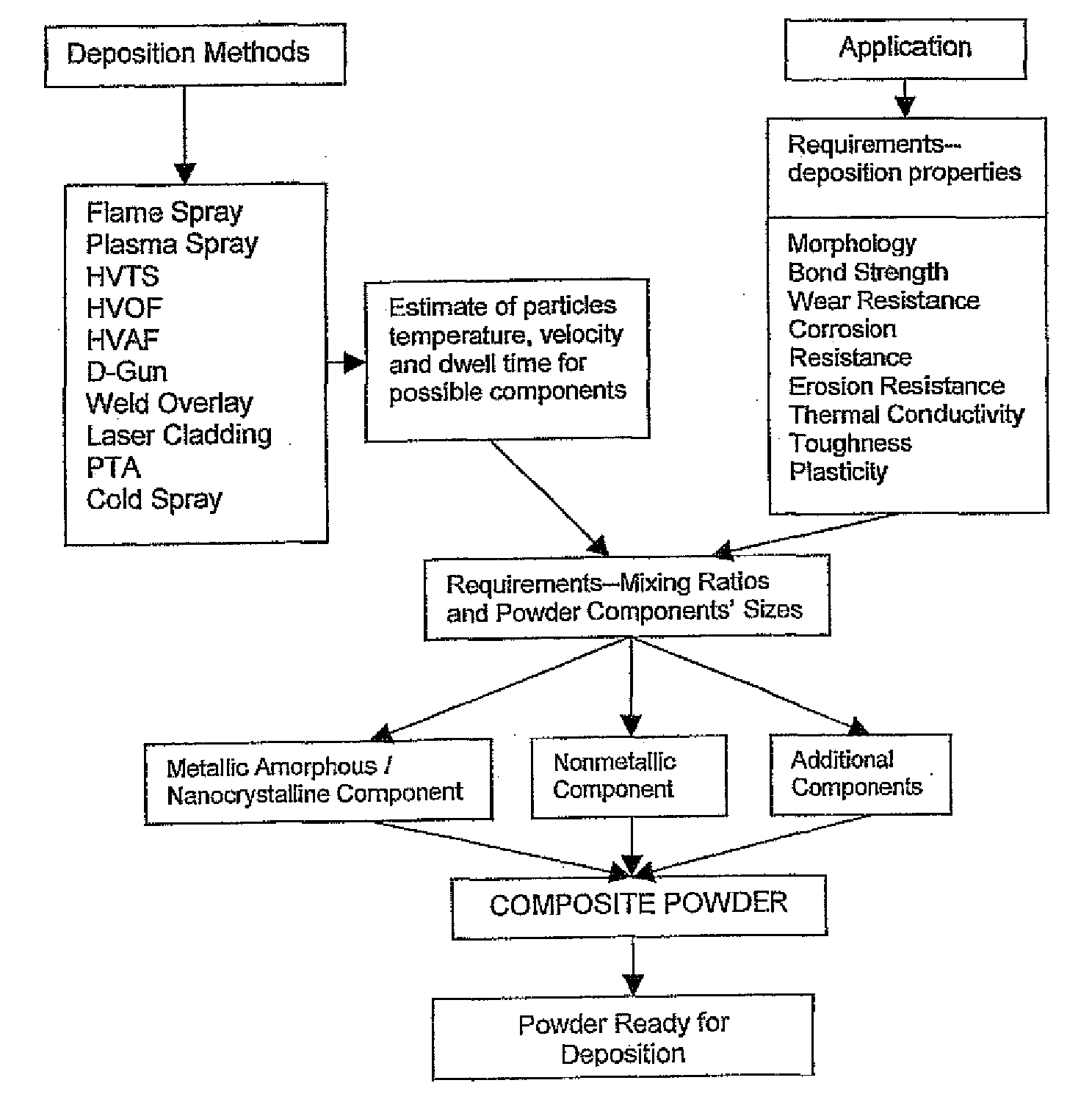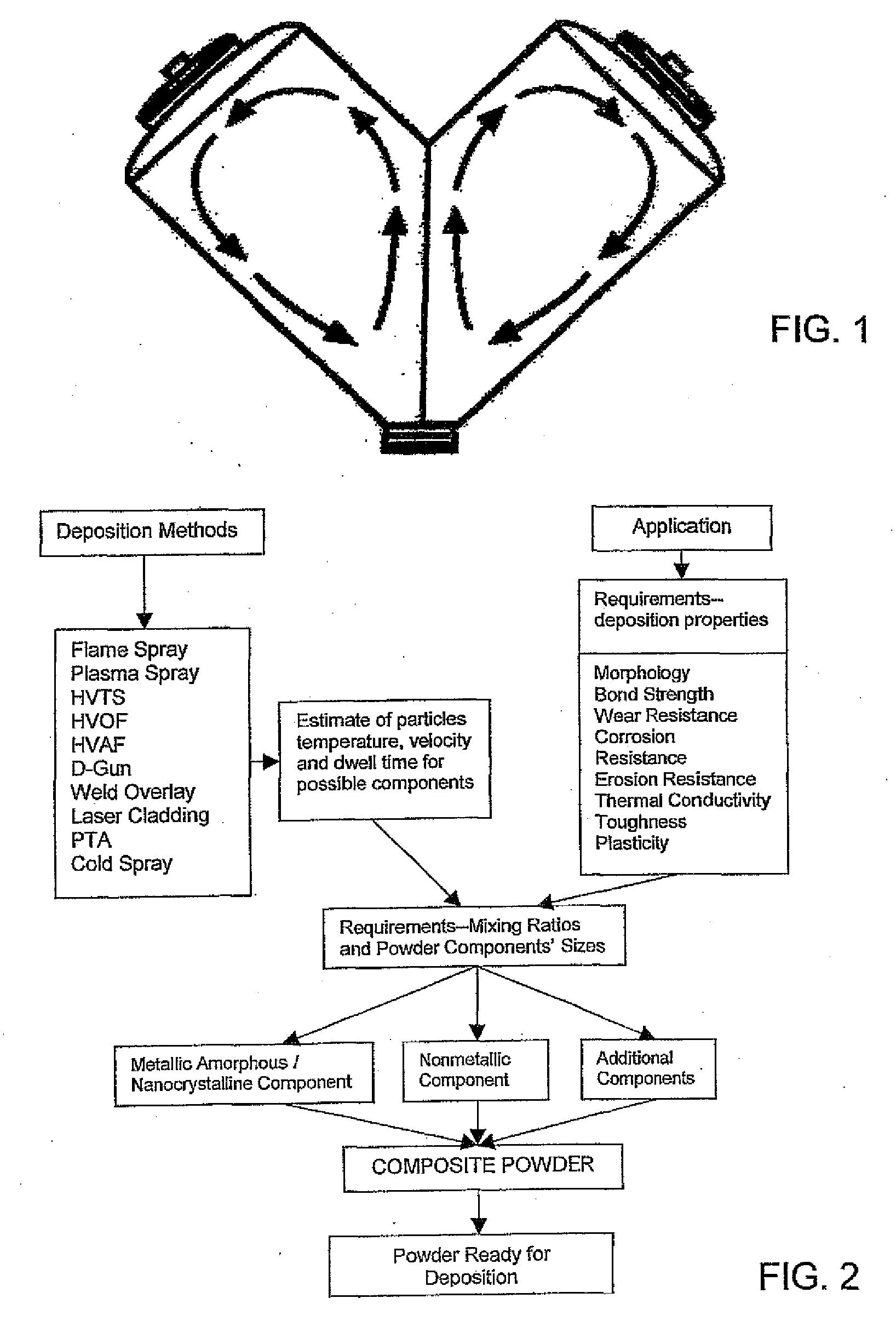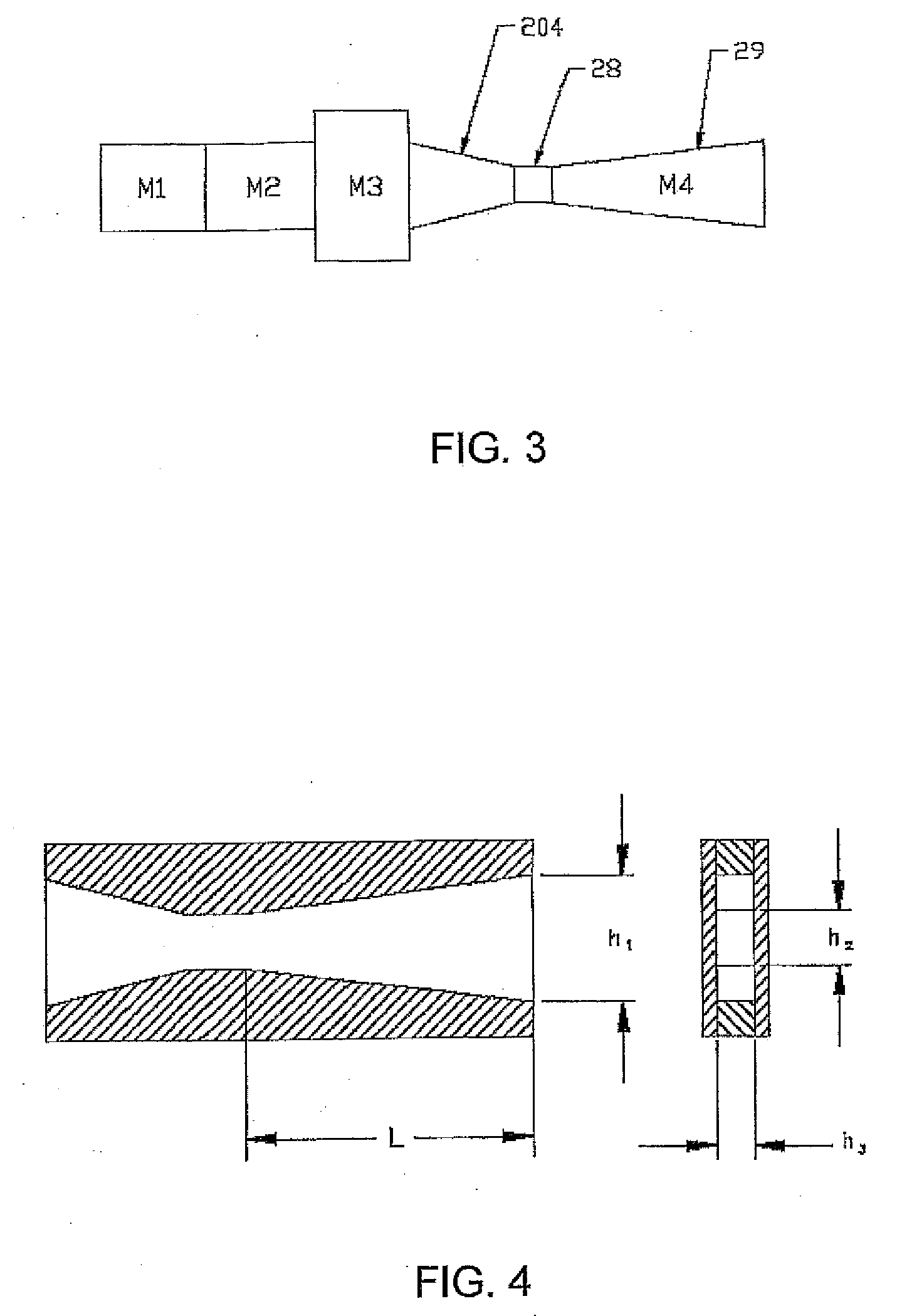Deposition System, Method And Materials For Composite Coatings
a technology of composite coatings and coatings, applied in the field of composite coatings deposition systems, methods and materials, can solve the problems of nitrides, carbonitrides, borides, etc., and achieve the effect of excellent structural properties and high corrosion resistan
- Summary
- Abstract
- Description
- Claims
- Application Information
AI Technical Summary
Benefits of technology
Problems solved by technology
Method used
Image
Examples
example 2
[0154] To make the composite powder designated CP-2, commercially available powders 1350VM from Praxair Surface Technologies and SHS 7170 powder manufactured by Nanosteel, Inc. are used.
[0155] Composite powder CP-2 is made as follows: the thermal spray powder having a nominal composition of 86% by weight tungsten carbide (WC), 10% by weight Cobalt (Co) and 4% by weight Chromium (Cr), or 1350VM powder, is screened through a 325 mesh sieve to insure the absence of coarse particles larger than 45-50 μm. Similarly, the amorphous metallic alloy powder, grade SHS 7170, manufactured by Nanosteel, Inc. is also screened through a 325 mesh sieve for the same purpose. SHS 7170 is composed of 25% or less Chromium, 8% or less Molybdenum, 10% or less Tungsten, 2% or less Carbon, 5% or less Manganese, 2% or less Silicon, 5% or less Boron, and a balance of Iron. Additionally, these powders are screened through a 635 mesh sieve to remove fine particles having a size of less than 15 μm. After screen...
example 3-7
[0156] Composite powders having various amounts of each component, designated as Composites No. 3 through No. 7 are prepared as described in the protocol for composite powder CP-2, above. However, powder SHS 7170 may be replaced with component SHS 7574 (also manufactured by Nanosteel, Inc.), and different quantities of each component are used for each of the different composite powders. Metallic alloy powder SHS 7574 has a composition similar to SHS 7170, but includes a higher content of Molybdenum.
ComponentsQuantity loaded inV-blenderComposite1350VmSHS 7170SHS 7574Powder(lbs.)(lbs.)(lbs.)CP-28.5015.00.00CP-38.500.001.50CP-46.500.003.50CP-56.503.500.00CP-65.005.000.00CP-75.000.005.00
example 8
[0157] To make the composite powder designated CP-8, commercially available powders 1350VM from Praxair Surface Technologies and SHS 7574 powder manufactured by Nanosteel, Inc. are used.
[0158] CP-8 is made as follows: Powder 1350VM is screened through a 325 mesh sieve to insure the absence of coarse particles larger than 45-50 μm. Metallic alloy powder SHS 7574 is then screened through a 500 mesh sieve and the resulting powder which passed the 500 mesh sieve is additionally screened through a 635 mesh sieve to obtain particles having a size of about 30 to 20 μm. After screening, 8.50 lbs of 1350VM powder and 1.50 lbs of SHS 7574 powder are loaded in a V-type blender having a capacity of about 1 cubic foot, and are blended for 30 min at 30 rpm.
PUM
| Property | Measurement | Unit |
|---|---|---|
| Length | aaaaa | aaaaa |
| Length | aaaaa | aaaaa |
| Length | aaaaa | aaaaa |
Abstract
Description
Claims
Application Information
 Login to View More
Login to View More - R&D
- Intellectual Property
- Life Sciences
- Materials
- Tech Scout
- Unparalleled Data Quality
- Higher Quality Content
- 60% Fewer Hallucinations
Browse by: Latest US Patents, China's latest patents, Technical Efficacy Thesaurus, Application Domain, Technology Topic, Popular Technical Reports.
© 2025 PatSnap. All rights reserved.Legal|Privacy policy|Modern Slavery Act Transparency Statement|Sitemap|About US| Contact US: help@patsnap.com



